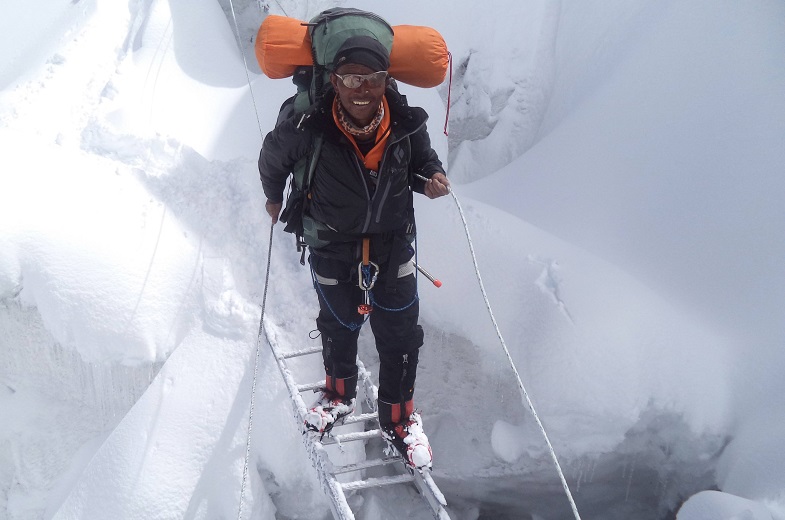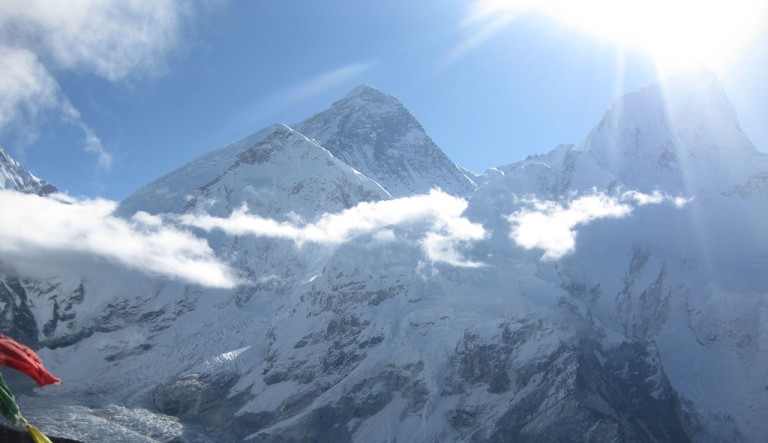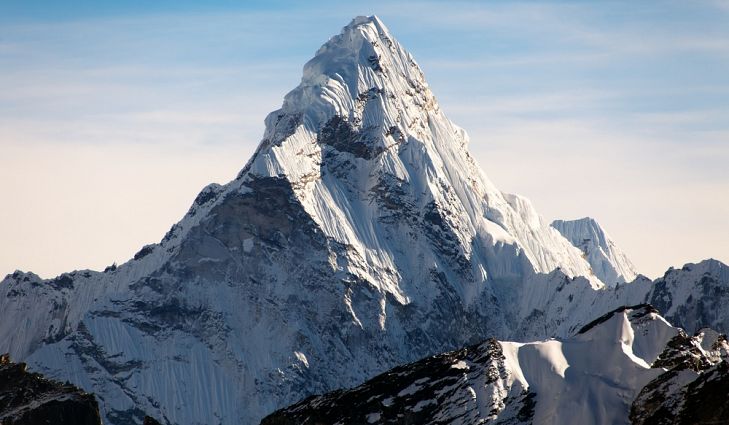- HOME
- Destination
- Adventure Activities
- About Us
- BLOGS
- CONTACT US

If you believe you will go to Nepal and climb Mount Everest in a couple of days and return back, you could not be more wrong. Mount Everest isn’t like other mountains of 6,000 to 7,000 meters which you can climb in a week or two. Climbing the entire 1,686 meter vertical from Camp 3 is strenuous and needs core physical and mental strength.
If you are pondering how long does it take to climb Mount Everest, then here’s your answer, it takes roughly two months to complete a successful attempt to the summit of Everest.
Spring season is the ideal time to climb Mount Everest. Mountaineers reach Everest Base Camp in late March and prepare for mountain summit. The best time to summit the mountain is from 10th May to 28th May, when the climate is dry, the sky is clear, and winds are less intense. Most of the summit expedition takes place in between these mid-days of May. Experienced Everest climbers and Sherpas consider May as the best time to summit to the top of Mount Everest.
Yearly on May, a brief period sees the wind lift above the Everest mountain making a golden opportunity to push for the summit. Mountaineers call this 4-5 days period as “The Window.” This brief window comes from 10th May to 23rd May. Just as northern Monsoon begins in the Bay of Bengal, the speedy wind lifts up the Everest summit. Most of the summit push from Camp 4 happens in this brief opportunity. During May, the winds are calmer. The winds in the mountains are around 100 miles an hour, which can kill a person in a matter of minutes.
Nearly 150 mountaineers attempt summit push in May, and most of them make it back alive. The death to summit ratio climbing at this time is around 1.3. Only one person dies among 100 in a summit push this time of year.
Mount Everest is not your everyday hiking mountains. You need discipline and patience to conquer this natural brilliance. Never attempt an Everest expedition in the winter and the monsoon season. Winds in the mountain reach up to 175 miles an hour, even stronger than hurricanes. In winter, the weather is not stable enough to complete the long summit journey.
You may get stuck in base camps for longer periods because of worsening weather conditions. Don’t get impatient and hasty for a push to the summit. A wrong decision can easily cost you your life so take your time and wait for your chance. It is better so scale safely when the weather conditions are stable.

Top of Mount Everest
How Long to Climb Mount Everest
On average, an Everest expedition takes about two months. The climbing starts at Everest Base Camp at 5,364 meters. You will stay in four additional camps on the way to the summit. There are just five camps between you and the Everest summit yet it takes around two months to safely and healthily traverse the tallest mountain in the world.
The main reason for a two-month long expedition is to let your body acclimate to the high altitudes. If you push the summit from one camp to another in a daily manner, you will develop acute Pulmonary Edema and Cerebral Edema. These are severe symptoms of altitude sickness and can cause death too. Thus, the answer to how long does it take to climb Mount Everest is around two months depending on the weather conditions and the acclimatization duration.
If you consider the time to travel from base camp to base camp, Everest summit will take about 5-6 days. The main issue is acclimatizing to the high altitude. The Everest expedition takes place through rotations of base camps in Everest. You travel from base camp to base camp, all to acclimate better and make the future climb easier.
After you reach the Base Camp(5,364 m.) in late March, you will stay in the base camp to adjust to the altitude. After resting, you scale up the unpredictable Khumbu Icefall halfway and return to the base camp. After a few days rest, you will again go up the icefall and stay at Camp 1(5,943 m.). The path to Camp 1 is above the Khumbu glacier and changes every year. The Ice Doctors at Everest Base Camp decides the pathway to Camp 1 through the glacier every year.
You will stay a few days in Camp 1 and return to base camp. Some night rest in the base camp and you are ready to reach Camp 2 (6,400 m.). After spending some nights getting used to the altitude at Camp 2, you again return to base camp and rest for another 3-4 days.
Again you climb up to Camp 2 rest for a day and reach Camp 3(7,162 m.) at the base of Mount Lhotse. After staying a night or two, you return all the way back to base camp. This ascends, and descend rotation helps you to adapt to the thin air and high altitude. You will experience the later climbs to base camps easier and quicker than your first try, all thanks to acclimatization.

After the return to base camp, you will rest for 4-5 days for a final push in the window of mid-may. Then you reach directly to Camp 2 for two nights and then reach Camp 3 the next day. The following day you will complete the vertical climb to Camp 4 situated at 8,000 meters. You rest at Camp four that night. Make sure to rest as much as possible and put your oxygen when in Camp 4 at all times.
You start the summit push as early as 9 pm to 11:45 pm. An early summit push gives you enough time to return to Camp 4 in broad daylight. It takes a gruesome 11 hours to reach the top of Mount Everest from Camp 4 and a further 7 hours to reach Camp 4 from the summit.
After returning to Camp 4, you will stay the night there resting. The next day you will reach down to Camp 2 and stay the night. Then you will climb down directly to base camp and rest for some days. Hence, your Everest summit attempt concludes.
After you complete a successful summit attempt, make sure you carry all your materials down from the base camps. You are expected not to leave materials like your tents, oxygen cylinders and any other personal waste materials in the vicinity of the mountain.
It is our responsibility to keep the mountains clean and sustainable for future mountaineers. Everest recently has seen lots of improper garbage disposal by mountaineers. The sight of base camps left in almost like a dumping site has caught the attention of environmentalists all over the world. The incident gave rise to several cleaning campaigns at base camps of Everest which collected and disposed of more than eight tonnes of garbage and waste materials.
A clean and green environment is also what future generations must get to experience in the future. So, prioritize to keep your waste materials to yourself and dispose of then when in cities and towns that have a proper waste management system.
How properly your body acclimatizes to the higher altitudes is the key to your success in reaching the Everest summit. Many mountaineers who haven’t acclimatized to the harsh altitude find it difficult to scale the entire mountain. Many mountaineers decide to descend from a couple of hundred meters from the summit because their body succumbs to altitude sickness and can’t climb any further. A proper rotation process of base camps and adequate rest is crucial for a successful Everest summit attempt.
If your body is properly acclimatized to high altitude on Everest, there is a higher chance of you reaching the top of the tallest mountain in the world. So make sure you complete the rotation of base camps in an orderly fashion, take regulated diets and take precautions to prevent any form of altitude sickness. So if anyone asks, how long does it take to climb Mount Everest, make sure to remind them that it is a long and thoughtful process of climbing and can take more than two months.
Your email address will not be published.Required fields are marked *
You must be logged in to post a comment.
0 Comments on "How Long Does It Take To Climb Mount Everest?"